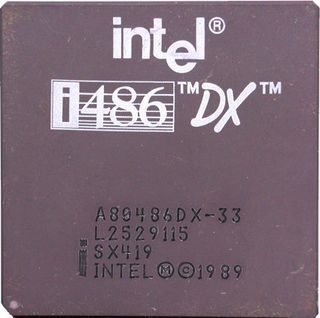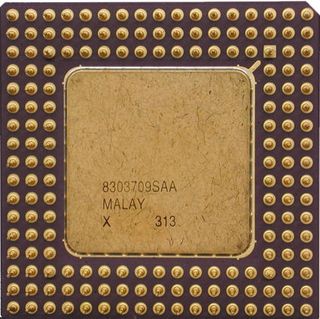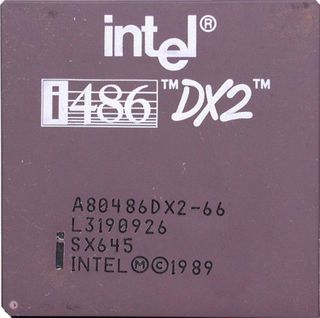The Mother of All CPU Charts Part 1
1989: PC Systems In The Mass Market - Sockets 1, 2 And 3
In 1989 Intel introduced the 486DX processor in Socket 1, which worked at a frequency of 25 MHz, increasing in subsequent years to as much as 133 MHz. The following reviews the beginning of the PC boom in the early 90s. Against this backdrop, many users switched over from the home computer - such as the Commodore C64, Commodore Amiga or Atari ST - to the PC, which wasn't always so easy.

Incredibly expensive: the Intel 486 DX with 33 MHz is equipped with a mathematical co-processor.

New: the 486 DX-33 clocks 1:1 with the bus clock

The DX series, shown here with 66 MHz, had a considerable advantage in speed compared to the SX processors. The "66" stands for 2x33 MHz bus clock. The socket is called Socket 2.

The last performance boost for Socket 2 and Intel's overdrive processor.

More power for Socket 2: For the required split voltage, a fixed voltage regulated is soldered to the ceramic carrier of the overdrive.
Stay on the Cutting Edge
Join the experts who read Tom's Hardware for the inside track on enthusiast PC tech news — and have for over 25 years. We'll send breaking news and in-depth reviews of CPUs, GPUs, AI, maker hardware and more straight to your inbox.
Current page: 1989: PC Systems In The Mass Market - Sockets 1, 2 And 3
Prev Page 1978: Beginning Of The X86 Era Next Page 1989, ContinuedTom's Hardware's dedicated news crew consists of both freelancers and staff with decades of experience reporting on the latest developments in CPUs, GPUs, super computing, Raspberry Pis and more.
-
Rare Intel Pentium P5 wafer with chips:Reply
http://www.chipsetc.com/intel-journey-inside-educational-chip-kits.html
Most Popular


